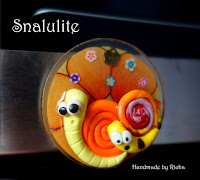Our newest Polymer clay designs begin with the ideas - Indian Traditional, wedding (occasion) and GRAND!!!
When the idea was formulating, again, with a traditional main theme, we contemplated mixing it with paper at first! Then came the idea of creating a third dimension in a pendant, and then we added symmetry to it!
Next came the few trials for making the Ganesha as the central piece, it took me at-least 3 tries before I was satisfied with the figurine. We baked it separately so as to avoid distorting it. Then painstakingly we outlined the flower in the 2nd layer of clay with a flower, so as to make it look like the Ganesha, sat in the centre of a Lotus. The matching Sari had the colours: Yellow-gold and Magenta, Since we could not include yellow in the pendant and earring ( because it lacked the contrast with the gold base), we incorporated it into the stringing with citrines and agates, which complimented each other completely!!! I decided to blend Magenta, Pearl and Purple clay together, to get a colour changing effect ( just like a Sari, that changes colour with the light). Once the outlines of the flower were in place, we filled in the channel created with minute clay balls, all cut to the measurement of 2mm each!!! Remember to do it, only when you are up for some brain numbing cutting and rolling! Trust me it takes hours! Once that was in place, we baked the 2nd part. The final layer, which included our veins for attaching the bead strings to the pendant came last. Once the base was created, we joined it together with the 2nd layer and an outline of clay and then merging the outline, such that it looked seamless! The biggest advantage of Polymer clay is that it can be baked as many times as you need as long as it is within its core baking temperature.
The ins and outs of the Nakshatram piece can be found at
The number two grand piece Nama:||
Next came the few trials for making the Ganesha as the central piece, it took me at-least 3 tries before I was satisfied with the figurine. We baked it separately so as to avoid distorting it. Then painstakingly we outlined the flower in the 2nd layer of clay with a flower, so as to make it look like the Ganesha, sat in the centre of a Lotus. The matching Sari had the colours: Yellow-gold and Magenta, Since we could not include yellow in the pendant and earring ( because it lacked the contrast with the gold base), we incorporated it into the stringing with citrines and agates, which complimented each other completely!!! I decided to blend Magenta, Pearl and Purple clay together, to get a colour changing effect ( just like a Sari, that changes colour with the light). Once the outlines of the flower were in place, we filled in the channel created with minute clay balls, all cut to the measurement of 2mm each!!! Remember to do it, only when you are up for some brain numbing cutting and rolling! Trust me it takes hours! Once that was in place, we baked the 2nd part. The final layer, which included our veins for attaching the bead strings to the pendant came last. Once the base was created, we joined it together with the 2nd layer and an outline of clay and then merging the outline, such that it looked seamless! The biggest advantage of Polymer clay is that it can be baked as many times as you need as long as it is within its core baking temperature.
Personal Note
I am lucky that Art'zire ropes me in for some juicy work. These projects I have never even considered doing, mainly because I doubt my own skills, but Pritesh is always there to help and give honest feedback. She sometimes thinks she is being very picky, and sometimes I think so too, and that's what makes all the difference between grand and "Grandeur". It's the exact measurement, mathematical precision and ideas that make the results worth everything. Sometimes it is mistaken for 'digitally printed designs'. In a manner of speaking we are glad for it! When people mistake our work for digital copies, it's a huge compliment to us!
So please let the love pour in!
~Richa



